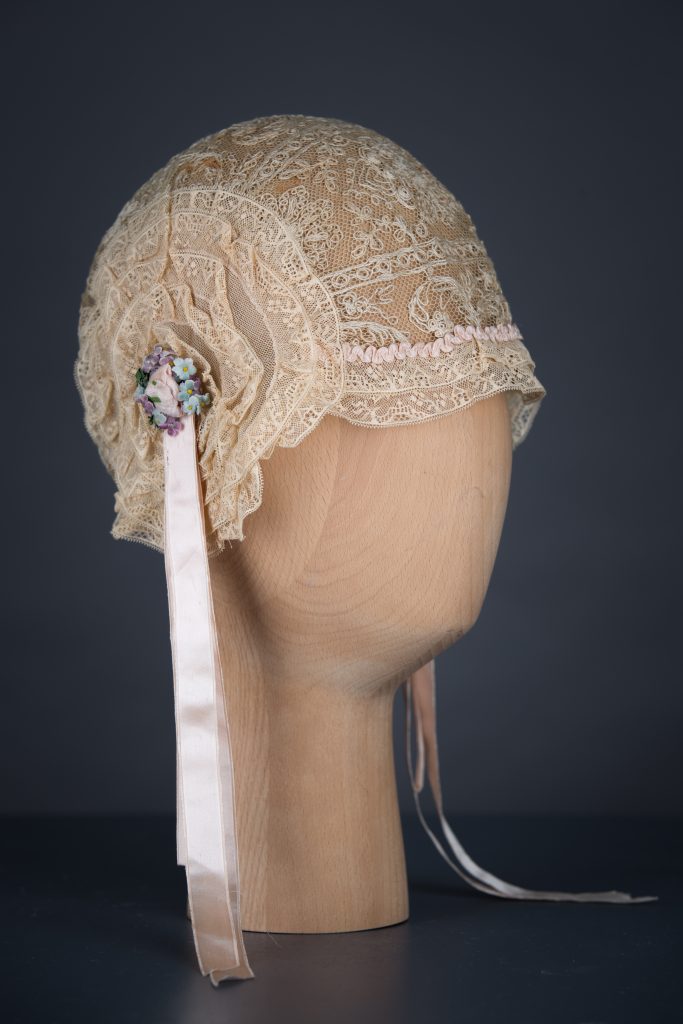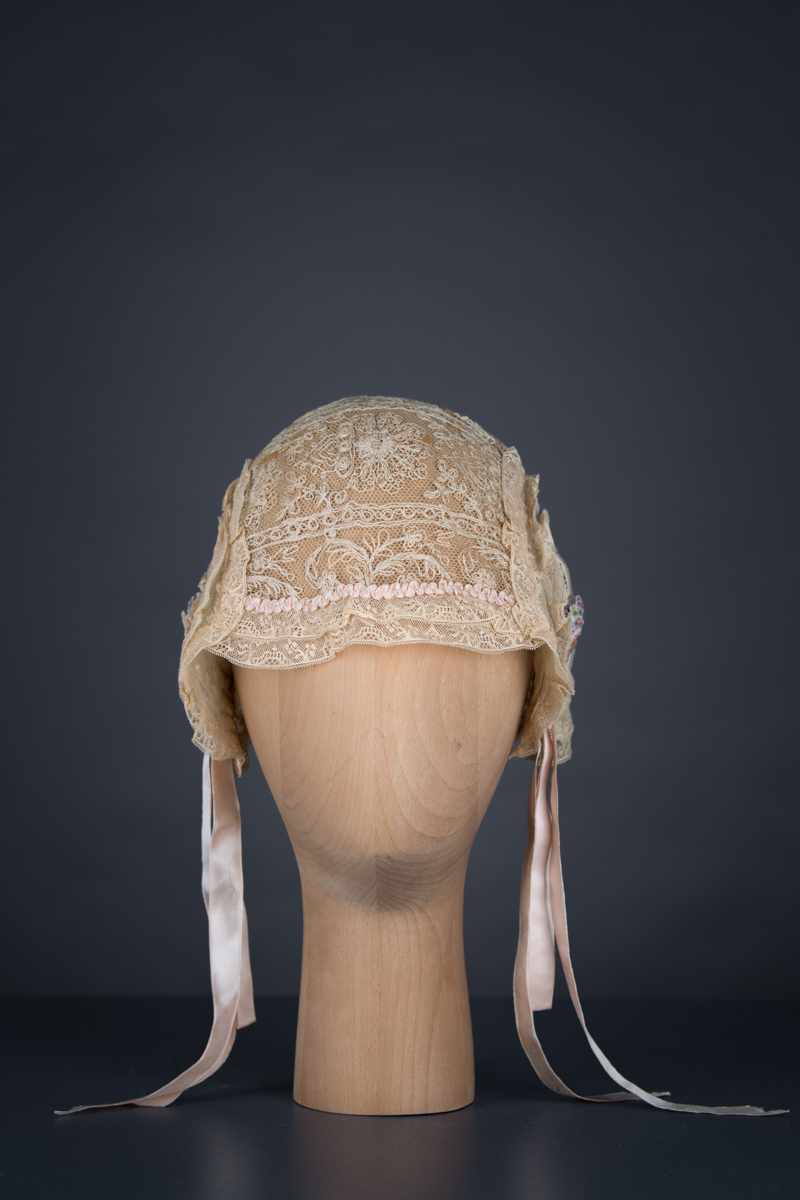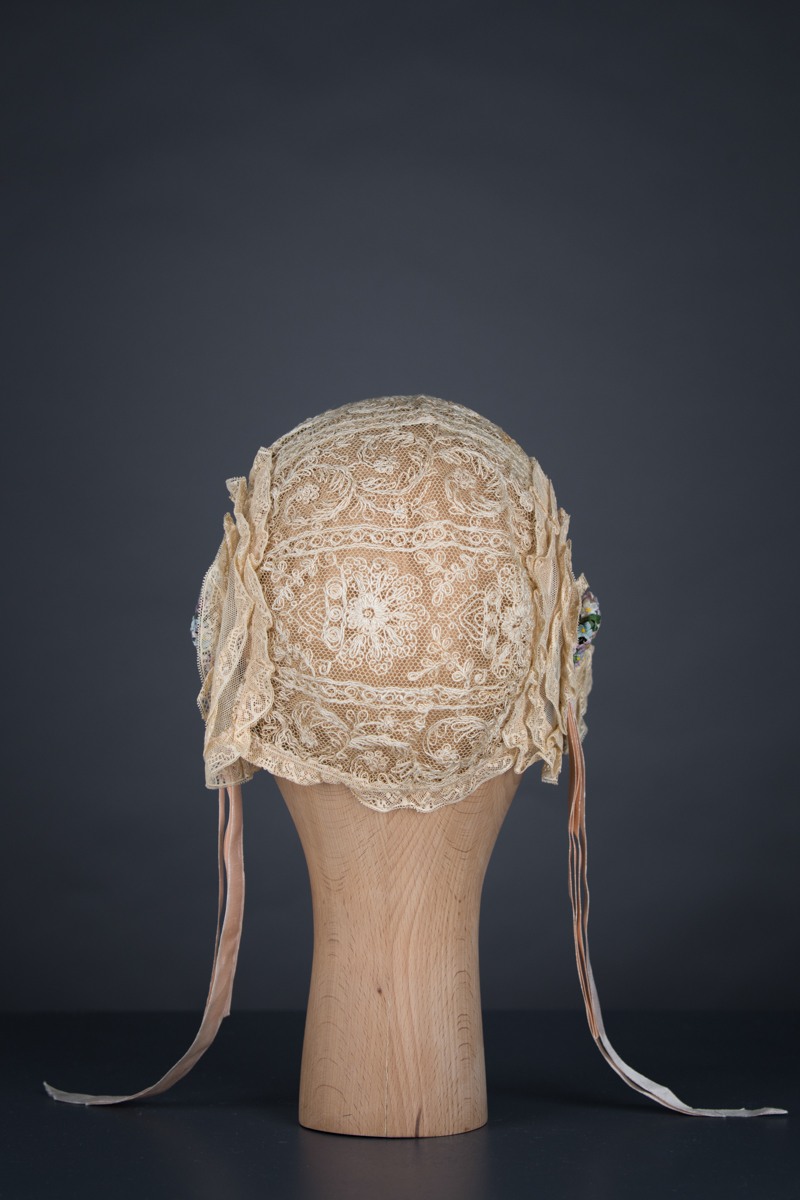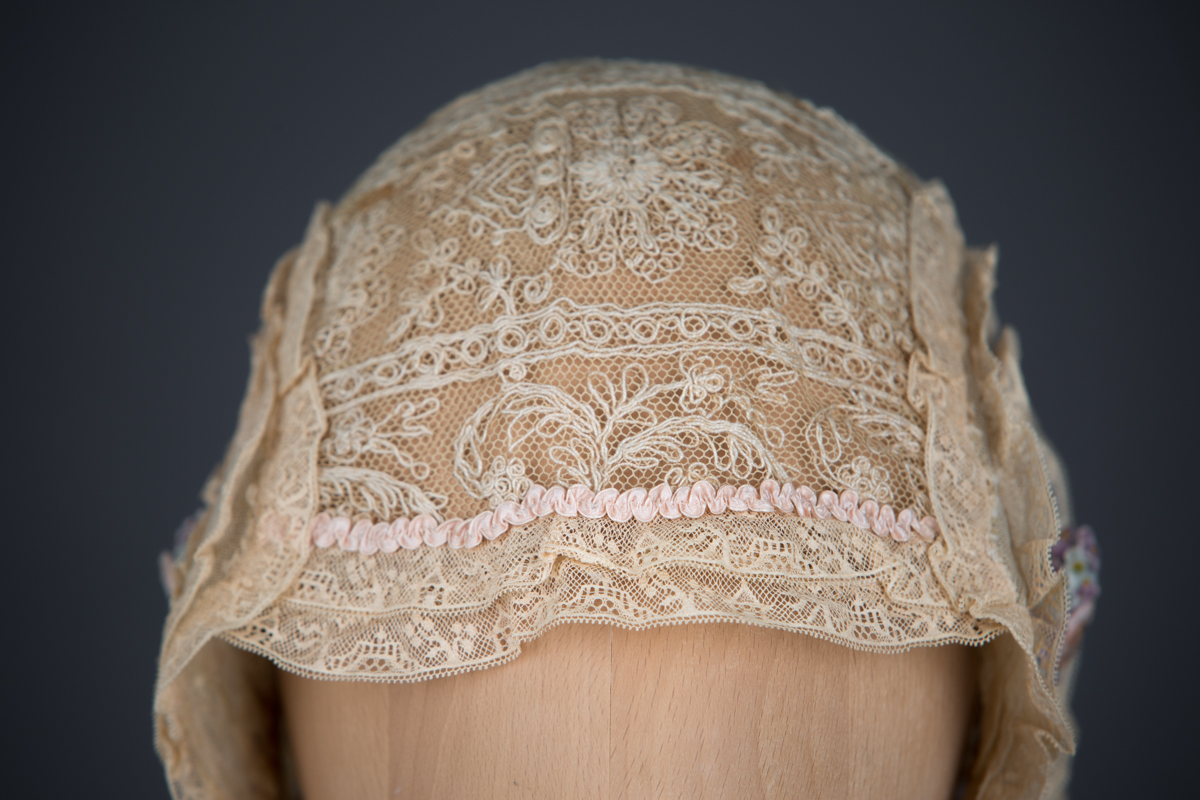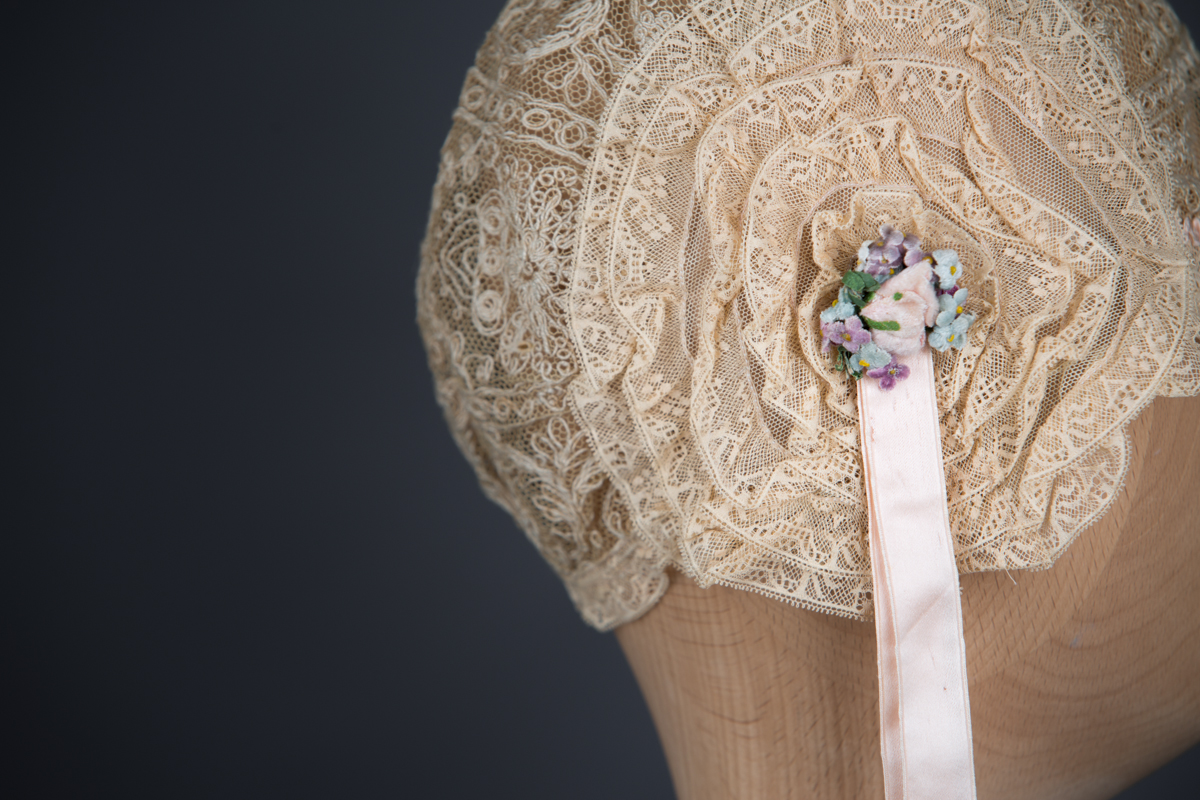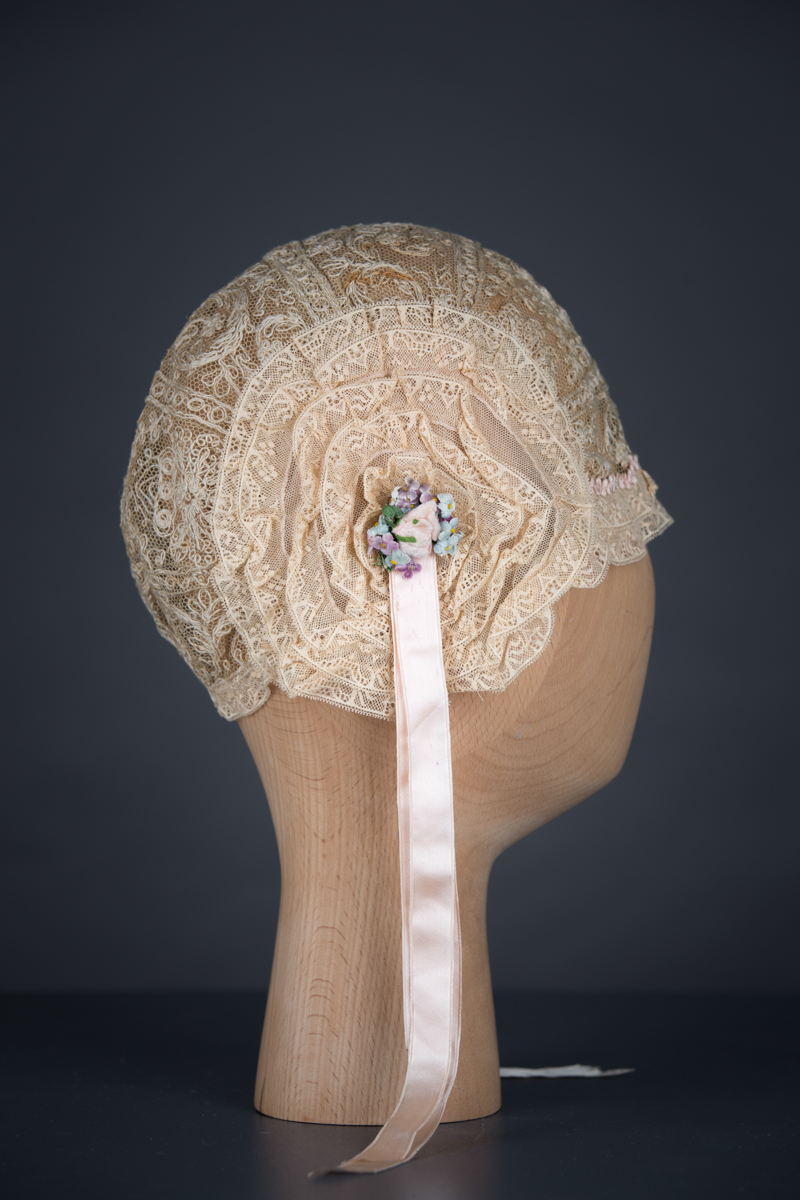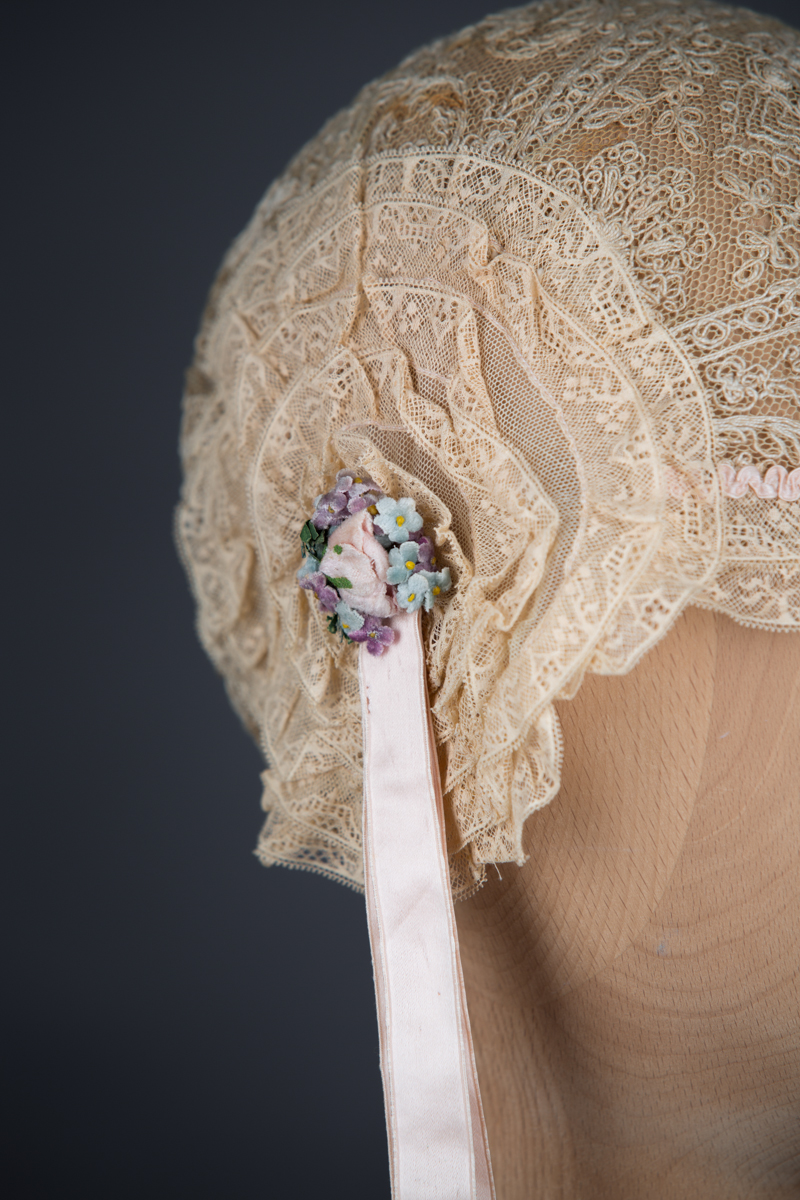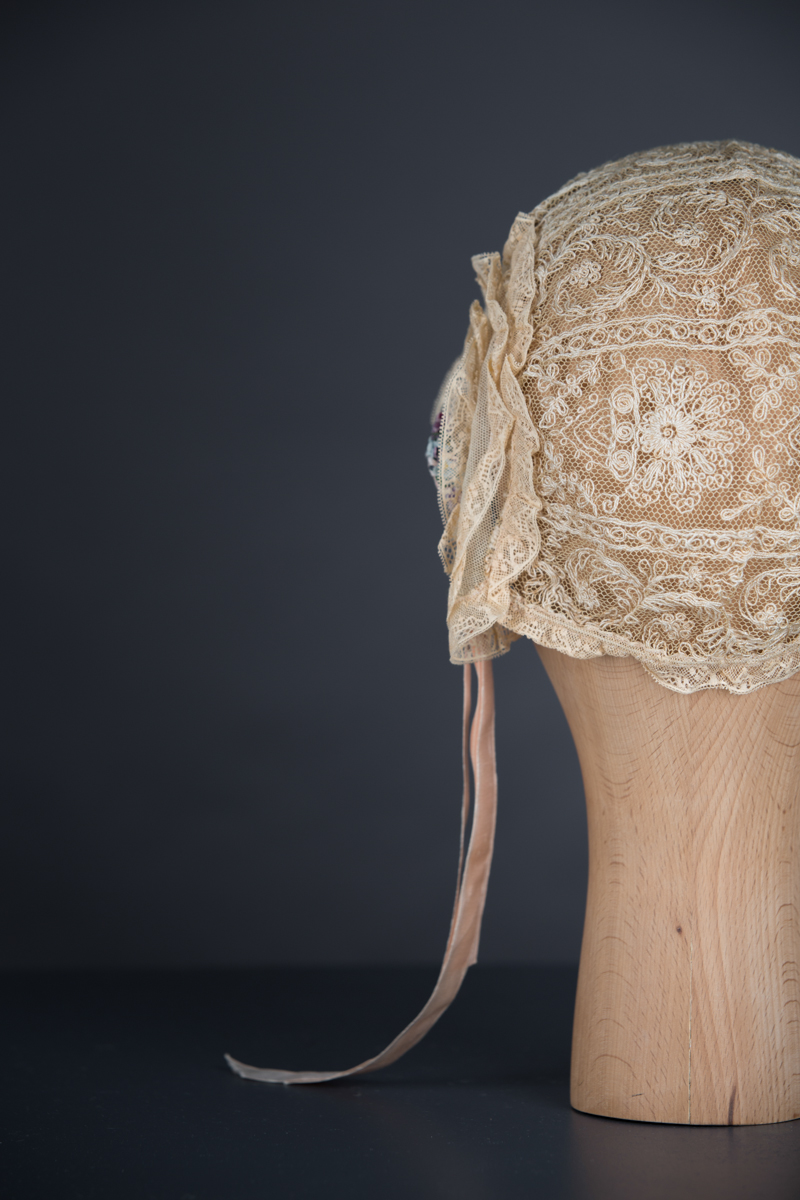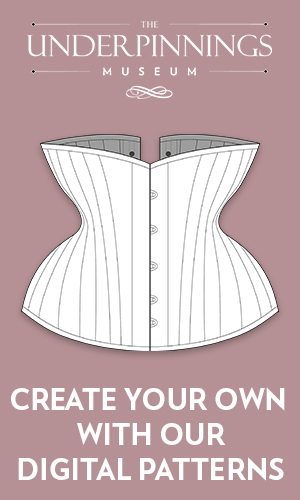Date: c. 1920s
Origin: United States
Fabric: Embroidered tulle, lace, silk ribbon
Brand: Custom made
A boudoir cap made with a base of varying weights of bobbinet tulle. The thicker of the tulles is used as a base of profuse hand embroidery that covers the majority of the cap, with a seam across the horizontal centre of the cap. A finer weight of tulle is used on round panels on either side.
Both side panels are embellished with 5 circular layers of ruched, fine, leavers lace, finished with a cluster of velvet flowers and silk ribbon streamers. The back hem is trimmed with a single layer of ruched leavers lace. The front hem of the cap has two layers of the lace, with a layer of ruched silk ribbonwork. The garment is largely sewn by hand, with the exception of the lace trims and side panels, that appear to have been attached by machine.
The boudoir cap was originally a type of lingerie headwear, most commonly worn during the nineteenth to early twentieth centuries. It was originally worn over undressed hair, worn in the privacy of the boudoir alongside nightwear. In the 1910s and 1920s, it would be commonly worn to protect shorter hair styles during sleep. As the designs became more and more elaborate towards the 1930s, it began to be considered more of a decorative hair net. Like other forms of lingerie, boudoir caps were usually made in fine fabrics such as lace, tulle and satin. Embellishment was often profuse, with techniques such as ribbonwork being particularly commonplace.
From the collection of Karolina Laskowska
